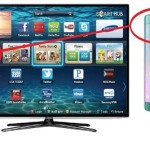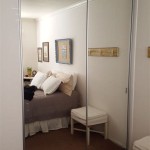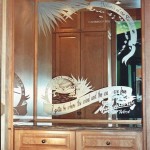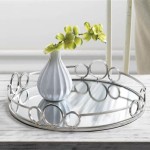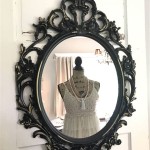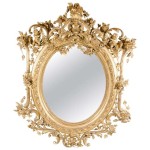How Do Lighted Mirrors Work?
Lighted mirrors, a staple in bathrooms and dressing rooms, offer enhanced visibility for grooming and makeup application. Their functionality relies on a combination of traditional mirror technology and integrated lighting systems, working in concert to provide a clear and illuminated reflection.
Reflection and Lighting: The Basics
A standard mirror works by reflecting light. The smooth, reflective surface, typically made of glass with a silver or aluminum backing, bounces light rays back towards the viewer. The angle of incidence, at which the light hits the mirror, equals the angle of reflection, creating a virtual image appearing to be behind the mirror's surface.
Incorporating lighting enhances this basic principle. The light source, placed strategically around or behind the mirror, provides additional illumination, reducing shadows and improving visibility. This supplementary light, when reflected, allows for a clearer and more detailed view of the reflected image.
Types of Lighting Used in Lighted Mirrors
Several lighting technologies are commonly employed in lighted mirrors, each offering unique characteristics:
- LED (Light Emitting Diode): LEDs are energy-efficient and offer a long lifespan. They provide consistent, bright light and are available in various color temperatures, from warm white to cool white.
- Halogen: Halogen bulbs produce a bright, white light, mimicking natural daylight. However, they consume more energy than LEDs and generate more heat.
- Fluorescent: Fluorescent tubes provide diffused lighting, often used in larger vanity mirrors. They are energy-efficient but can flicker and may contain mercury.
- Incandescent: While less common in modern lighted mirrors, incandescent bulbs offer a warm, yellowish light. They are less energy-efficient than other options.
Placement and Design of Lighting
The placement of the light source significantly impacts the mirror's functionality. Several common configurations exist:
- Backlighting: Light positioned behind the mirror creates a halo effect, illuminating the wall around the mirror and providing ambient lighting. This can be aesthetically pleasing but may not provide sufficient light for detailed tasks.
- Front Lighting (Perimeter Lighting): Lights placed around the perimeter of the mirror, often embedded within the frame, offer direct illumination onto the face. This minimizes shadows and provides optimal lighting for makeup application and grooming.
- Side Lighting: Lights positioned on the sides of the mirror offer a balanced illumination but can still cast some shadows.
Powering the Lighted Mirror
Lighted mirrors can be powered in several ways:
- Direct Wiring: This involves connecting the mirror directly to the electrical wiring within the wall. It offers a permanent solution and a clean, uncluttered look.
- Plug-in: Mirrors with a power cord can be plugged into a standard electrical outlet. This offers flexibility and easier installation.
- Battery-Powered: Some smaller, portable lighted mirrors operate on batteries, providing portability and convenience.
Features Enhancing Functionality
Modern lighted mirrors often incorporate additional features to enhance their usability:
- Dimmability: Allows users to adjust the brightness level to suit their needs and preferences.
- Color Temperature Control: Enables users to switch between warm and cool light settings, mimicking different lighting conditions.
- Magnification: Some mirrors offer integrated magnifying sections for detailed tasks like tweezing or applying makeup.
- Defogging: A built-in defogging mechanism prevents the mirror from steaming up in humid environments.
- Smart Features: Integration with smart home systems allows for voice control and customization of lighting settings.
Choosing the Right Lighted Mirror
Selecting the appropriate lighted mirror depends on individual needs and the intended use. Factors to consider include the size of the mirror, the type and placement of lighting, available features, and the overall aesthetic of the space.
Considering these aspects ensures a functional and aesthetically pleasing addition to any bathroom or dressing area, providing the optimal lighting conditions for grooming and personal care.

Backlit Vs Lighted Mirrors What S The Difference Ledmyplace

Led Mirrors How Do They Work And Why You Need One Remer

Battery Led Mirror Vs Regular Which One Should You Choose
Guide How To Choose An Led Mirror Roomhints

Is Electricity Necessary For Lighted Vanity Mirror Ledmyplace
Guide How To Choose An Led Mirror Roomhints

Do You Need A Vanity Light With Lighted Mirror Ledmyplace

Tatahance 32 In W X H Large Round Frameless Led Light Wall Bathroom Vanity Mirror F Rm6666 The Home Depot

The Ultimate Guide To Smart Mirrors Durovin

Meykoers Round Bathroom Bluetooth Led Mirror Lights With Clock Demister Pad 60cm

